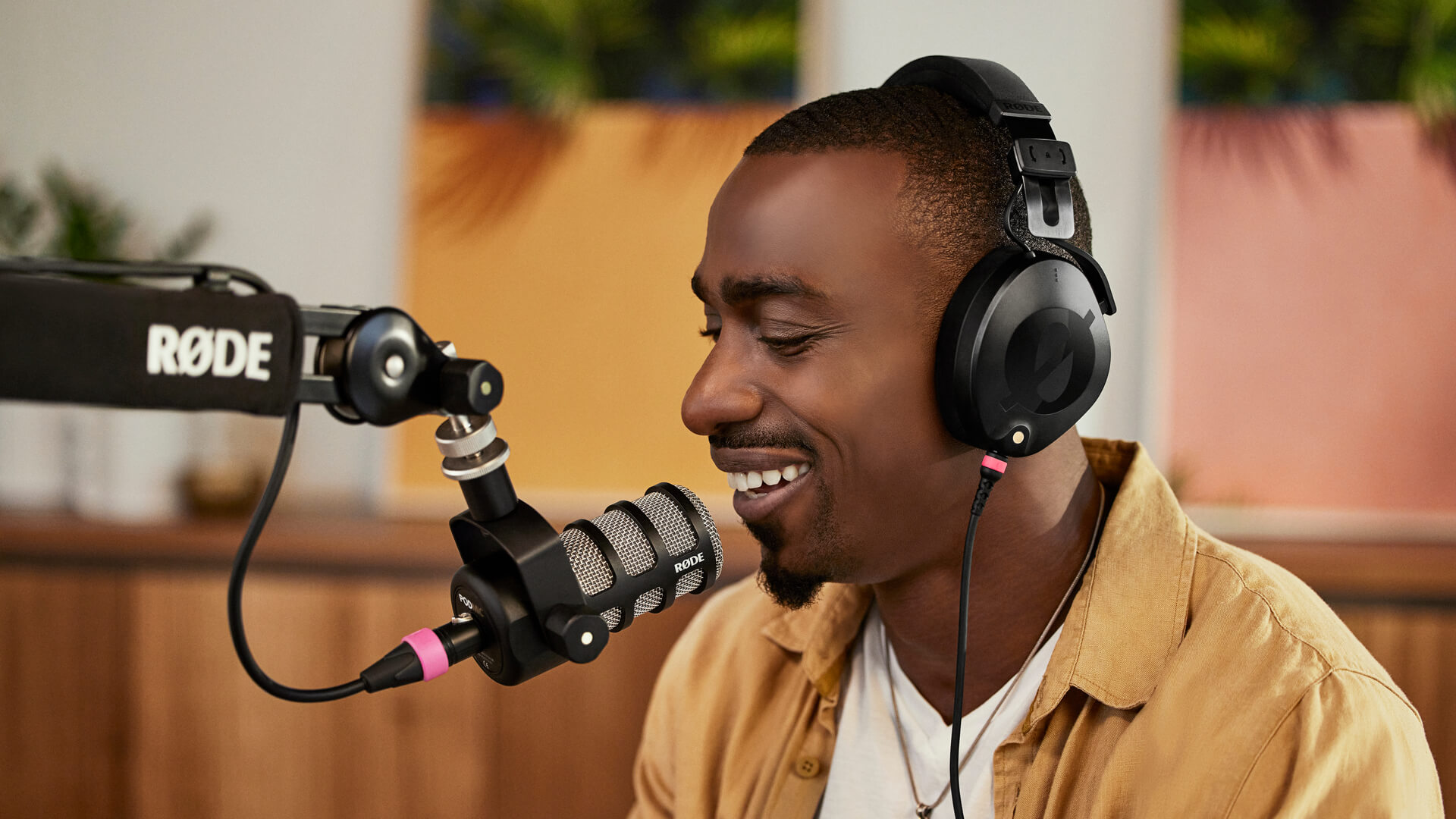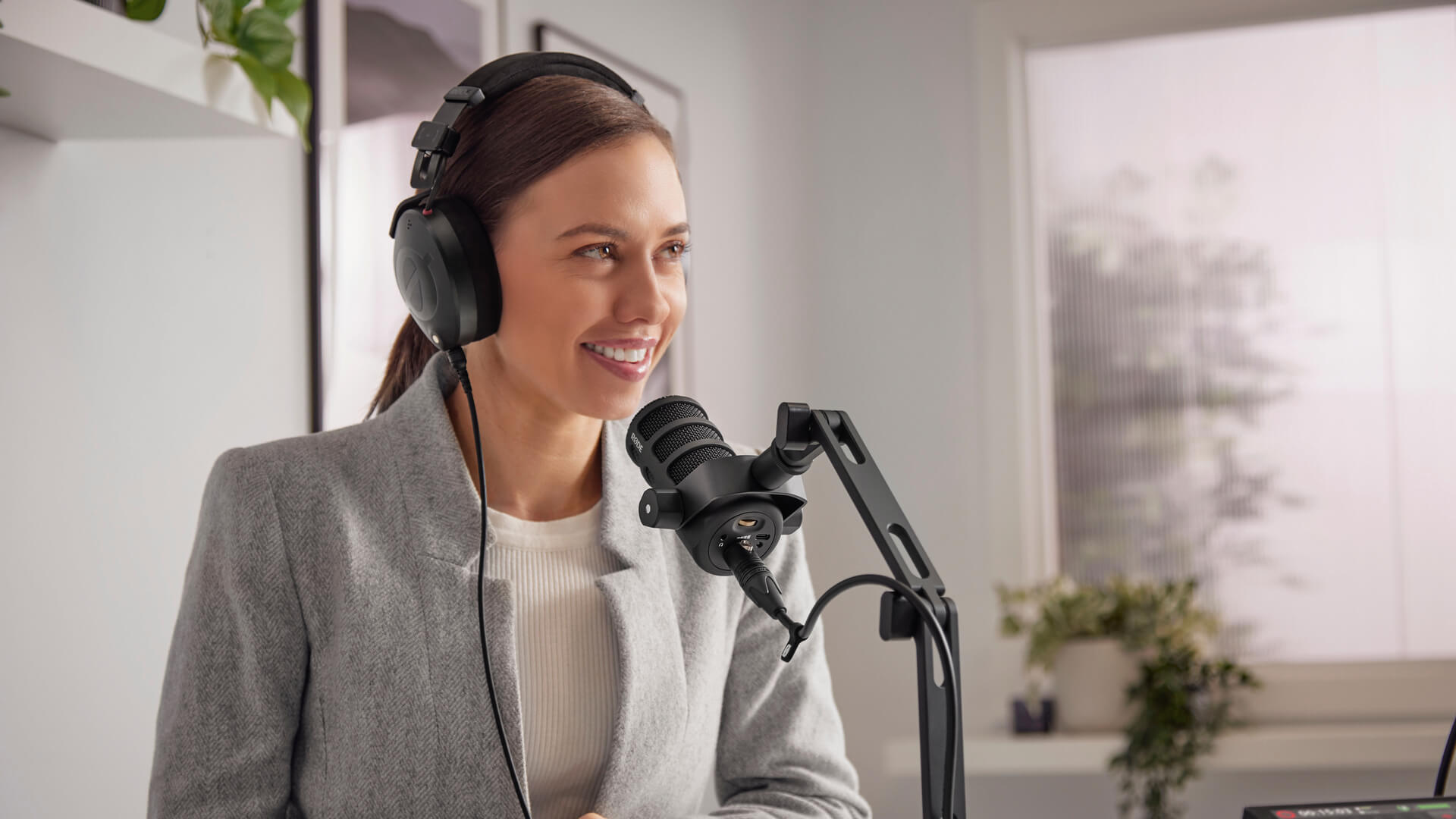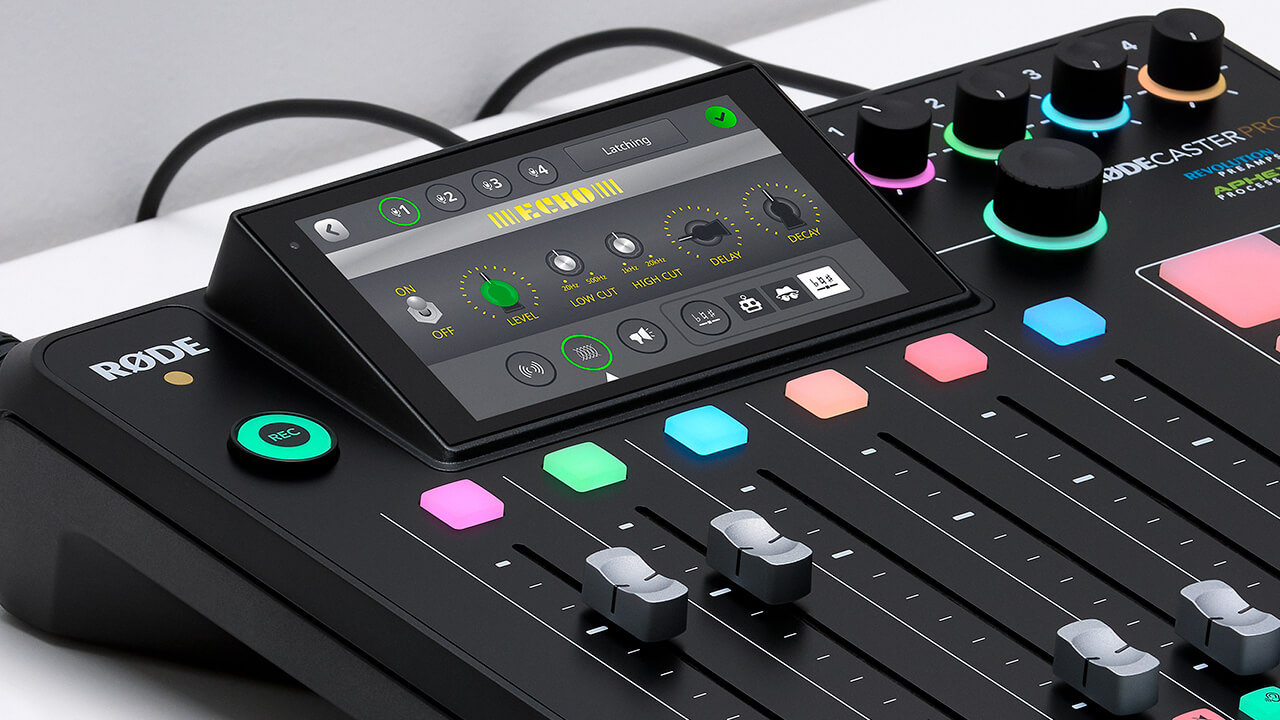Check if you’re using an end-address microphone (like the PodMic) where the capsule is facing out towards the end, or a side-address microphone (like the NT1) where the capsule faces perpendicular to the microphone’s body.
You’ll want to speak towards the capsule but not directly into it – try talking on a very slight angle to prevent plosives (brief puffs of air that can distort the microphone capsule, formed by mouthing sounds such as the ‘p’ in ‘plosive’).
In terms of distance, position your microphone about 4 - 6 inches away from your mouth for dynamic microphones, or about 6 – 8 inches for condenser microphones, to avoid sounding distant and echoey.
You can speak closer to the microphone capsule to make use of the “proximity effect”, which enhances the low-end frequencies in your voice, but this can take some practice to avoid plosives. We also recommend using a pop filter over, or in front of your microphone to help tame these plosives even more.
Mixing and Monitoring
Setting and maintaining good recording levels is a critical component of professional-sounding audio. If your levels are too low, you may introduce background noise when trying to lift your audio later on, and if they're too high, you could end up clipping your audio and render it useless.
Take the time to set the gain level for each person speaking in your podcast, including phone calls or any other sounds you plan to have in your show. It’s best to first set your levels by rehearsing as if it were the final production, so nothing takes you by surprise.



